I typically use use water or no binder OR a thin coat of a cooking oil like EVOO.
If the chicken is skin-on, I’ll always use oil – for reasons I outline below.
1. Water or No Binder
When taking a whole chicken or chicken parts out of their vacuum packing, they’ll already feel “wet.”
This is because they’re surrounded by what’s called the “purge.”
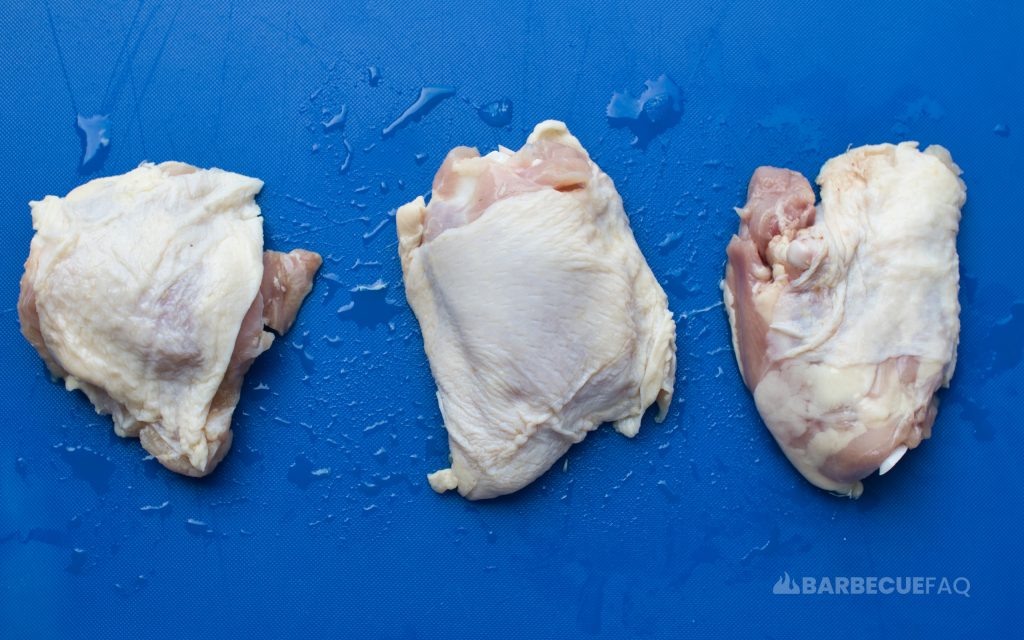
Most recipes and articles will tell you to “pat the meat dry” which removes this liquid.
You also don’t need to “wash” or “rinse” your meat in the sink prior to cooking it (or even pat it dry). This is because poultry is cleaned during processing.
But every culture is different.
There are reasons for patting dry though – like improving the sear; This way the pan doesn’t have to vaporize the water.
I personally like to air dry the chicken skin overnight with salt. The goal being to remove moisture from the skin so that it’ll crisp up easier.
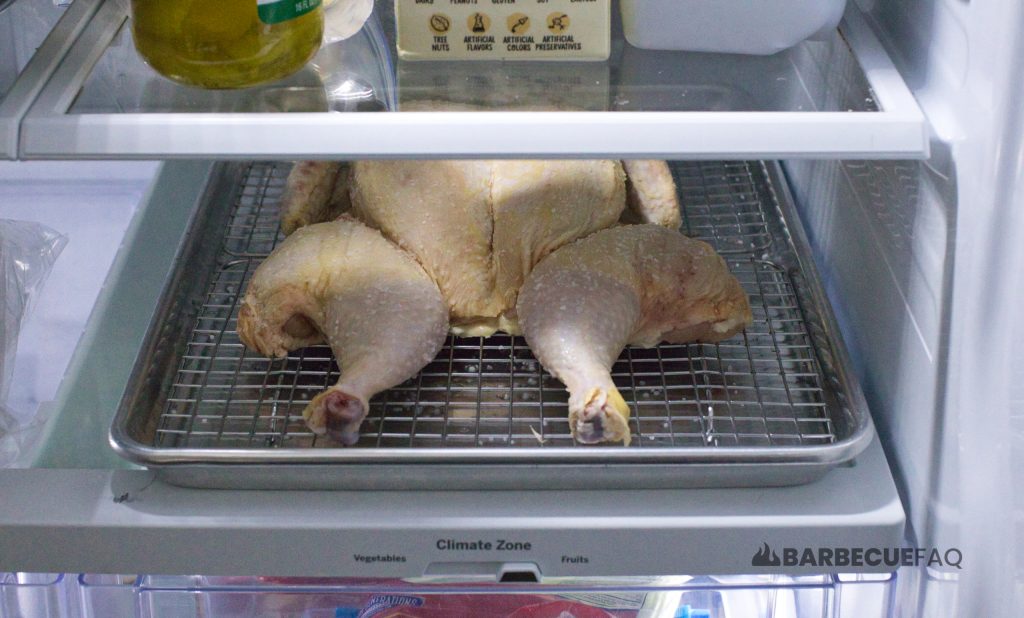
Doing this also makes any seasonings have a really hard time sticking to the surface though.
Which is where neutral cooking oils like EVOO come into play.
2. Some Form of Neutral Cooking Oil
Chicken is typically cooked at a higher temperature as apposed to low and slow and the oil helps with browning and heat transfer.
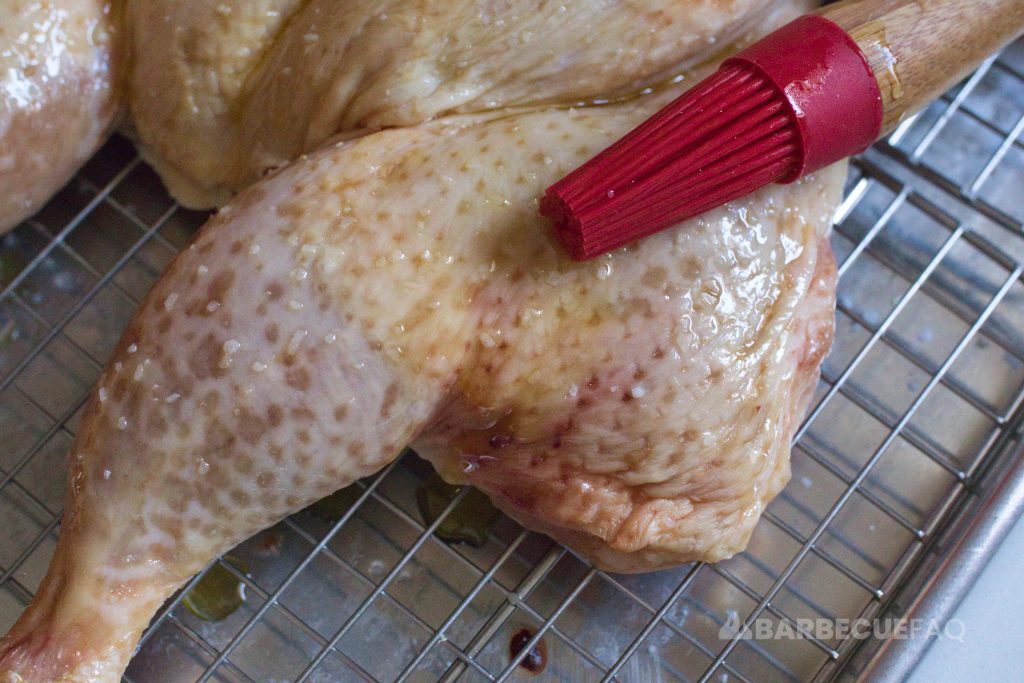
Aside from these aspects, the oil can also function as a binder.
My only issue with cooking oils – like olive oil – is that it tends to be expensive.
Again, my goal with skin-on chicken is to have crispy skin and moist/tender meat. Meaning, I don’t want to re-add water and un-do this air-drying process I described above.
Instead, I use EVOO for the potential of browning the skin and making it crispy.
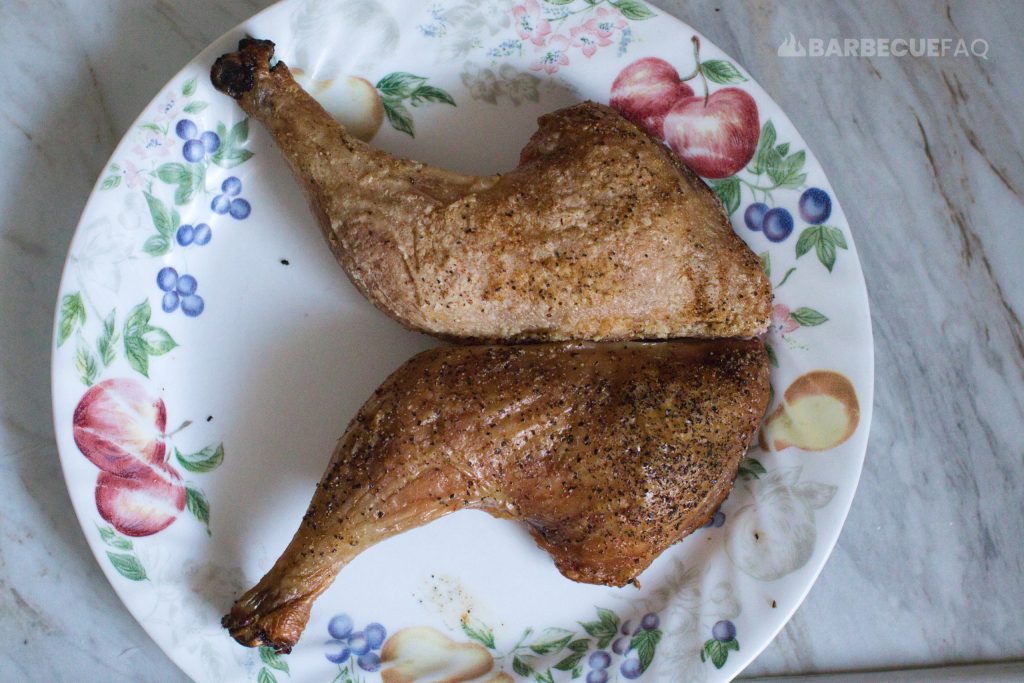
3. Mayo?
Mayo is really just egg yolk and oil that’s emulsified.
Similar to the neutral oil, it will help promote browning (due to the oil).
All you need is a thin layer applied to the skin – I even just use this in marinades for chicken and it works great.
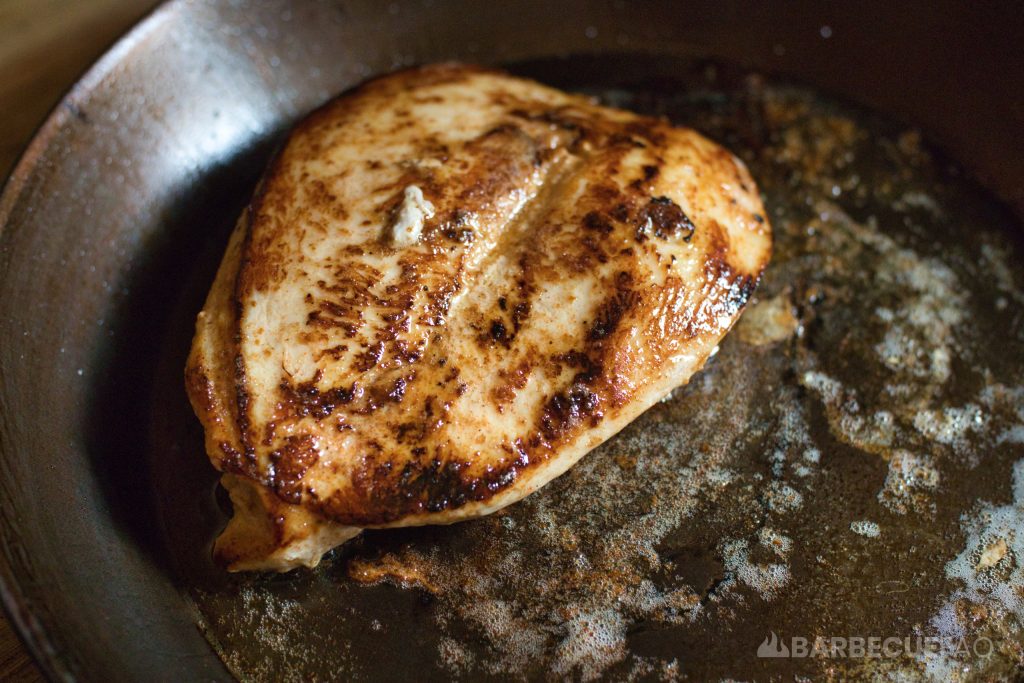
Unlike the olive oil which is expensive, mayo is very cheap and most people have it in their refrigerator.
You can also mix with the mayo things like herbs (thyme, sage, rosemary, etc.) and they’ll stick to the surface of the meat.
4. Pickle Juice
This is more so common with a brine – which the chicken is submerged in.
People use pickle juice because it’s salty and vinegary – meaning it will flavor, season and tenderize the meat.
BUT as a binder, there’s so little on the exterior you won’t taste it.
I often have pickle juice in my refrigerator and this is just another way to use it – but I’d rather just use tap water.
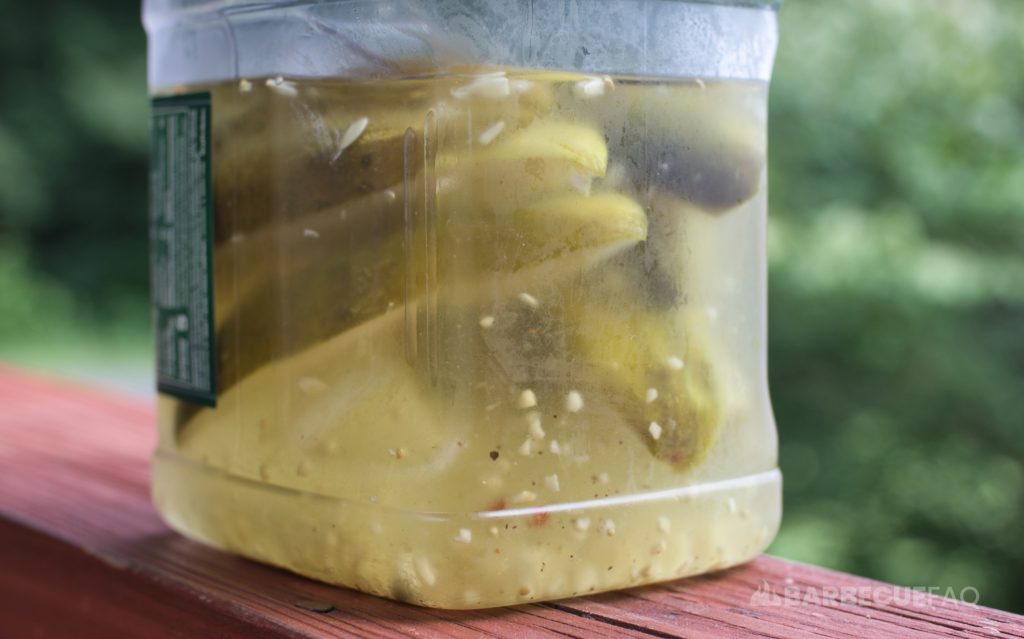


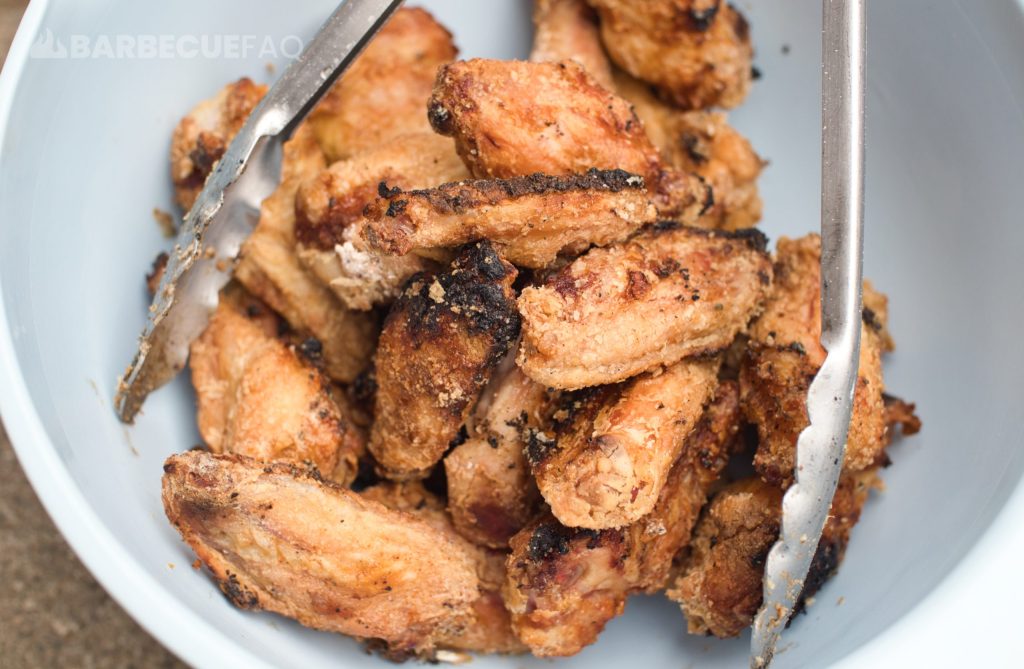
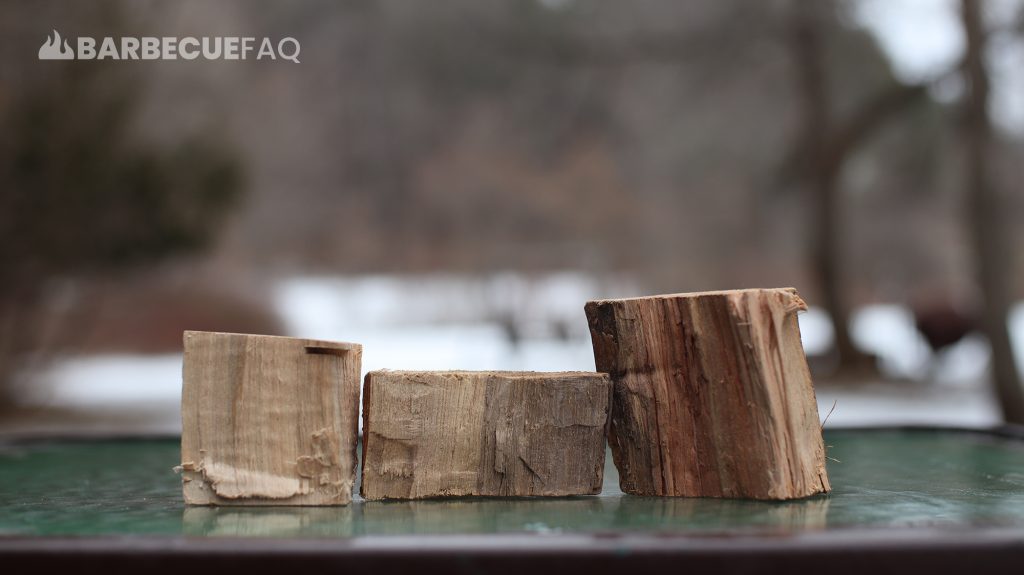
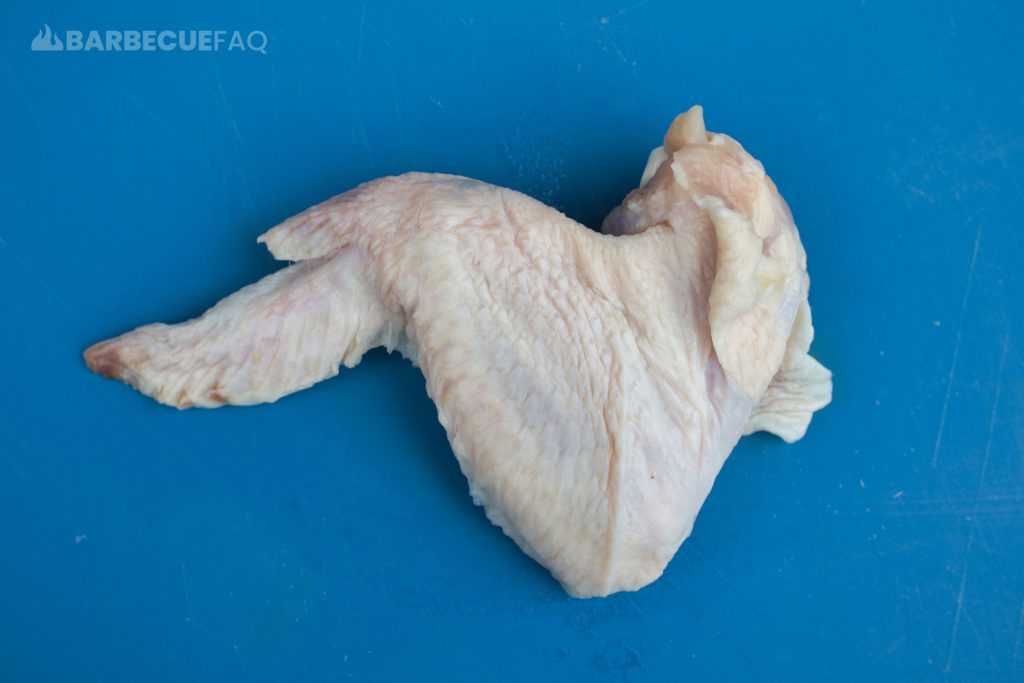
2 comments
Patrick Bernards
Very helpful! I just retired and want to concentrate on making better barbecue and smoked meats. I suspect I’ll be visiting your site a great deal. Thank you, Dylan!
Dylan Clay
Happy to help Patrick!